Jirye Arts Village (지례예술촌)
2024-05-29
427 Jiryeyesulchon-gil, Andong-si, Gyeongsangbuk-do
+82-54-852-1913
Located in Andong, Jirye Arts Village first formed as a result of the construction of Imha Dam. When a small neighborhood in Jirye-ri, Imdong-myeon was at the risk of flood due to the dam, Kim Won-gil, the village leader at the time, relocated and rebuilt ten houses to the current location in 1986. This neighborhood, now known as Jirye Arts Village, was designated as an art village in 1990 and since then, many artists settled in the neighborhood and formed a community of culture and art. Today, Jirye Arts Village offers a variety of opportunities to experience Korean culture through hands-on arts and crafts as well as diverse cultural activities.
Halla Arboretum (한라수목원)
2025-10-23
72 Sumogwon-gil, Jeju-si, Jeju-do
+82-64-710-7575
Halla Arboretum is home to nearly 1,100 species of plants, including both natvie jeju flora and exotic subtropical species. The arboretum offers visiors with the opportunity to enojy a variety of wildflowers throughout the year. It features specialized gardens dedicated to rare Jeju plants, orchids, aquatic plants, along with greenhouses and a forest bath site located along the Gwangioreum Trail. The trail is known for its gentle incline, making it ideal for leisurely strolls. These walks offer the ideal opportunity to fully appreciate the fragrant array of flowers blooming along the path..
63 Square (63스퀘어)
2024-03-05
50, 63-ro, Yeongdeungpo-gu, Seoul
+82-2-789-5663
63 Square is one of the most recognizable landmarks of Korea and the symbol of its rapid economic growth. Like its name, the building has 63 floors, 60 above-ground and 3 underground. The lobby and the outdoor garden exhibits installations created by contemporary artists. 63 Square is known for its golden glass facade, which puts up different ambiences depending on the season and the amount of sunlight. It is the best place to watch the fireworks from the Seoul International Fireworks Festival.
Korean Folk Village (한국민속촌)
2024-11-28
90 Minsokchon-ro, Giheung-gu, Yongin-si, Gyeonggi-do
Korean Folk Village introduces traditional culture from the late Joseon period to both local and international visitors through cultural classes experience, shaman faith, seasonal customs and others. It recreated the past through the restoration of houses from the Joseon dynasty.
Performances including folk music, martial arts on horseback, traditional wedding ceremony, and other special performances and events are available by season. In particular, "Welcome to Joseon," an event held every May, takes visitors back to the past. In addition, a family-friendly theme park equipped with 15 exciting attractions is also available. Visitors can also try various Korean foods at the market street.
Dalmaji Road (해운대 달맞이길)
2024-03-06
190, Dalmaji-gil, Haeundae-gu, Busan
+82-51-749-5700
Dalmaji Road refers to the pass that connects Haeundae Beach with Songjeong Beach over Wausan Mountain. It is an 8 km-long coastal road lined with cherry and pine trees, offering a beautiful coast view and a perfect place for seaside drives. The summit of the pass has the Dalmaji Hill and the Haewoljeong Pavilion, which overlook the view of the Cheongsa Port and the sea. The road also has many cafés, restaurants, and galleries. The "moonrise at the Dalmaji Road" is not to be missed.
Cheonmachong Tomb (Daereungwon Ancient Tombs) (천마총(대릉원))
2025-05-21
9 Gyerim-ro, Gyeongju-si, Gyeongsangbuk-do
+82-54-743-1925
Daereungwon Ancient Tombs are one of the most well-known sights in Gyeongju, a history park home to 23 small and large ancient tombs. The area is dotted with tranquil trails among the tombs like the largest tomb in Hwangnam-dong, Hwangnamdaechong Tomb; Cheonmachong Tomb, the place where Cheonmado, a saddle flap painting, was excavated from; and the tomb of King Michu, nicknamed the “Tomb of the Bamboo Warrior.”
Cheonmachong Tomb, excavated in 1973, has a x_height of 12.7 meters and a diameter of 50 meters. Its excavation unearthed many artifacts, such as the famous Gold Crown from Cheonmachong Tomb. Its name comes from Cheonmado, a mudguard saddle flap with a painting of a heavenly horse. Cheonmachong Tomb is the only tomb in the Daereungwon Ancient Tombs to be opened to the public.
The tomb is thought to have been constructed between the late 5th century and early 6th century. Artifacts excavated from the tomb include a gold crown, gold cap, gold waist belt, gold diadem, and gilt-bronze shoes worn by the buried. The gold crown, in particular, is known as the largest and the most elaborate of all gold crowns unearthed in Korea. The artifacts themselves can be found in Gyeongju National Museum, so don’t miss the chance to see them in person.
Another must-visit site is the Daereungwon Magnolia Photo Area, a lone magnolia tree standing between the beautiful curves of ancient tombs.
Namsangol Hanok Village (남산골한옥마을)
2025-07-14
28 Toegye-ro 34-gil, Jung-gu, Seoul
Namsangol Hanok Village opened in 1998 on the northern side of Namsan Mountain in the center of the capital. This village has five restored hanok (traditional Korean house) premises, a pavilion, a traditional garden, a performance art stage, and a time capsule plaza, making it a perfect spot for locals and tourists to take a leisure walk. Upon entering from the front gate, visitors will get a taste of Korea's traditional life while escaping from bustling city life. The traditional garden with its pavilion and old houses creates a peaceful ambiance before the forested Namsan Mountain. A time capsule commemorating Seoul’s 600th anniversary was buried in 1994 at the highest point of the village and is scheduled to be reopened 400 years later in 2394.
The five hanok premises at Namsangol Hanok Village once belonged to aristocrats and government officials of the Joseon dynasty. Each house was originally located in a different neighborhood, but they were all moved to this area and restored to their original form. The houses were rebuilt using their original materials, except for one house, where the materials were too old and deteriorated to be reused. The premises were carefully restored and replicated according to their original form to depict the owners’ social class and personality. These buildings are now used as an exhibit to portray the living environment during the Joseon dynasty and as a venue for educational and cultural programs for children and tourists.
Some of the unique programs and activities to participate in include wearing hanbok, folding hanji (traditional Korean paper), writing in Korean, traditional tea ceremony, traditional etiquette school, and herbal medicine experience. There are also taekwondo demonstrations and other various performances held around the village. Visitors can also try traditional games such as yunnori (traditional board game), or understand more about the area through a guided tour.
Heolleung and Illeung Royal Tombs [UNESCO World Heritage] (서울 헌릉(태종,원경왕후)과 인릉(순조,순원왕후) [유네스코 세계문화유산])
2021-07-24
36-10, Heonilleung-gil, Seocho-gu, Seoul
+82-2-445-0347
Heolleung and Illeung Royal Tombs house the mounds for two kings of the Joseon dynasty (1392-1910) and their wives: King Taejong (1401-1418) and Queen Wongyeong, along with King Sunjo (1800-1834) and Queen Sunwon. Together, the tombs are referred to as Heonilleung Royal Tomb. The site possesses numerous stone statues and vestiges, and is a good place to experience the culture of the Joseon dynasty.
Osaengnyeong (Hangyeryeong) Pass (오색령(한계령))
2021-04-12
Seo-myeon, Yangyang-gun, Gangwon-do
+82-33-672-2883
This 1,004 m-high pass connects Seo-myeon of Yangyang-gun and Buk-myeon and Girin-myeon of Inje-gun, at the border between Naeseorak and Namseorak. The people of Yangyang know the pass as Osaengnyeong, while in Inje it is known as Hangyeryeong. Yi Jung-hwan, a late Joseon period scholar and the author of the geographical text Taengniji (On Selecting a Village), counted Osaengnyeong Pass as the first and the foremost of the six famous passes in Gangwon-do. Indeed, Osaengnyeong Pass was the route through which essential supplies were transported from Yangyang (in Yeongdong) to Inje (in Yeongseo region), and the rough pass taken by the people of Yangyang on the way to Seoul. Its presence in the folklore of the region can be seen in the popular song Hangyeryeong, which speaks to the difficulties of those who had to climb the pass. Hangyeryeong Road was opened in 1981, and today’s National Road No. 44 is famous for being a driving course through the beauty of Seoraksan Mountain. This is also the starting point of the shortest route to Daecheongbong Peak, the highest peak in Seoraksan Mountain, and the trail to the summit of Jeombongsan Mountain.
Ganghwa Bomunsa Temple (보문사 (강화))
2025-06-30
44 Samsannam-ro 828beon-gil, Ganghwa-gun, Incheon
+82-32-933-8271
Bomunsa Temple is located on Seongmodo Island in the Gangwondo Island district. The temple is on Sangbongsan Mountain, one of three mountains that make up the Samsan-myeon area. Like many temples in Korea, the foundation date is unknown but it is believed to have been founded in 635 during the reign of Silla Queen Seondeok. The temple faces out to the ocean, with the sound of waves reaching all the way to the main building.
The main courtyard is fragrant with the scent of an aromatic tree, designated Incheon Natural Monument No. 17. Beyond the tree is a gathering of Buddhist scuptures and a large grotto.
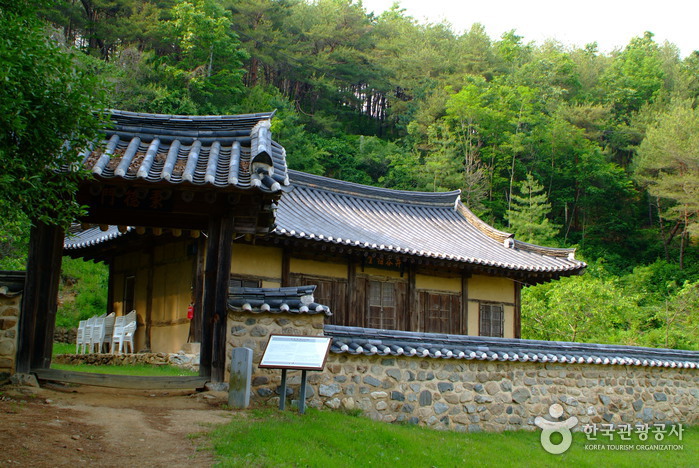
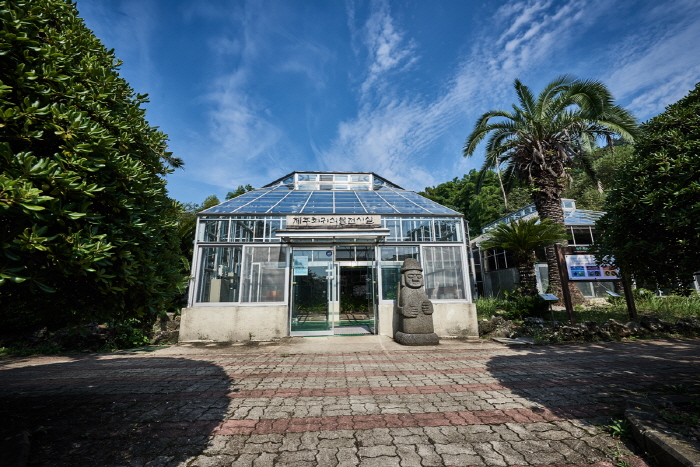
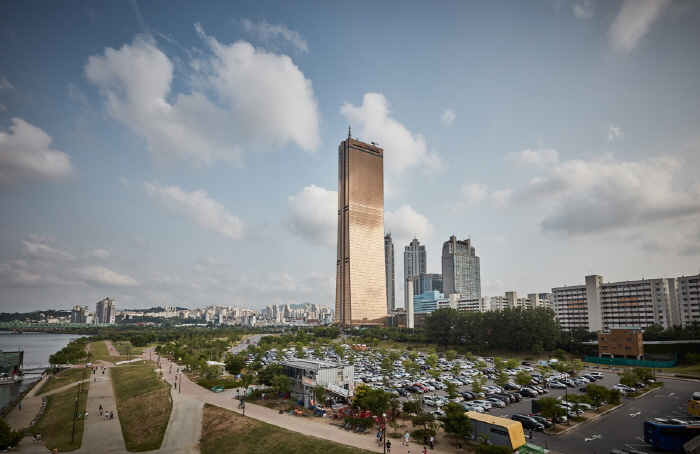
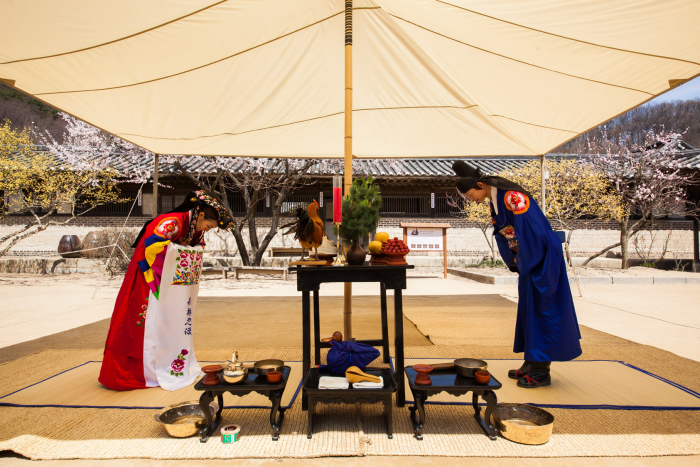
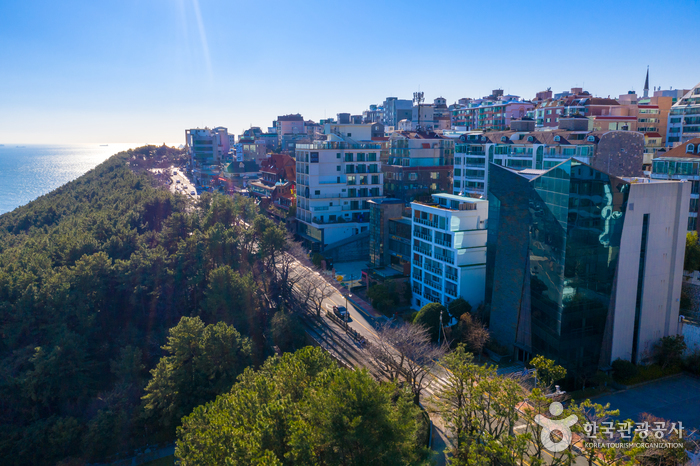


![Heolleung and Illeung Royal Tombs [UNESCO World Heritage] (서울 헌릉(태종,원경왕후)과 인릉(순조,순원왕후) [유네스코 세계문화유산])](http://tong.visitkorea.or.kr/cms/resource/42/1985242_image2_1.jpg)

 English
English
 한국어
한국어 日本語
日本語 中文(简体)
中文(简体) Deutsch
Deutsch Français
Français Español
Español Русский
Русский